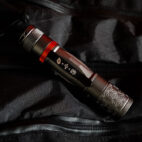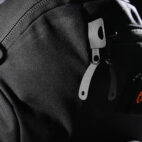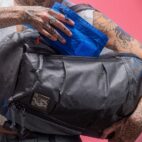
Carry Collaborations
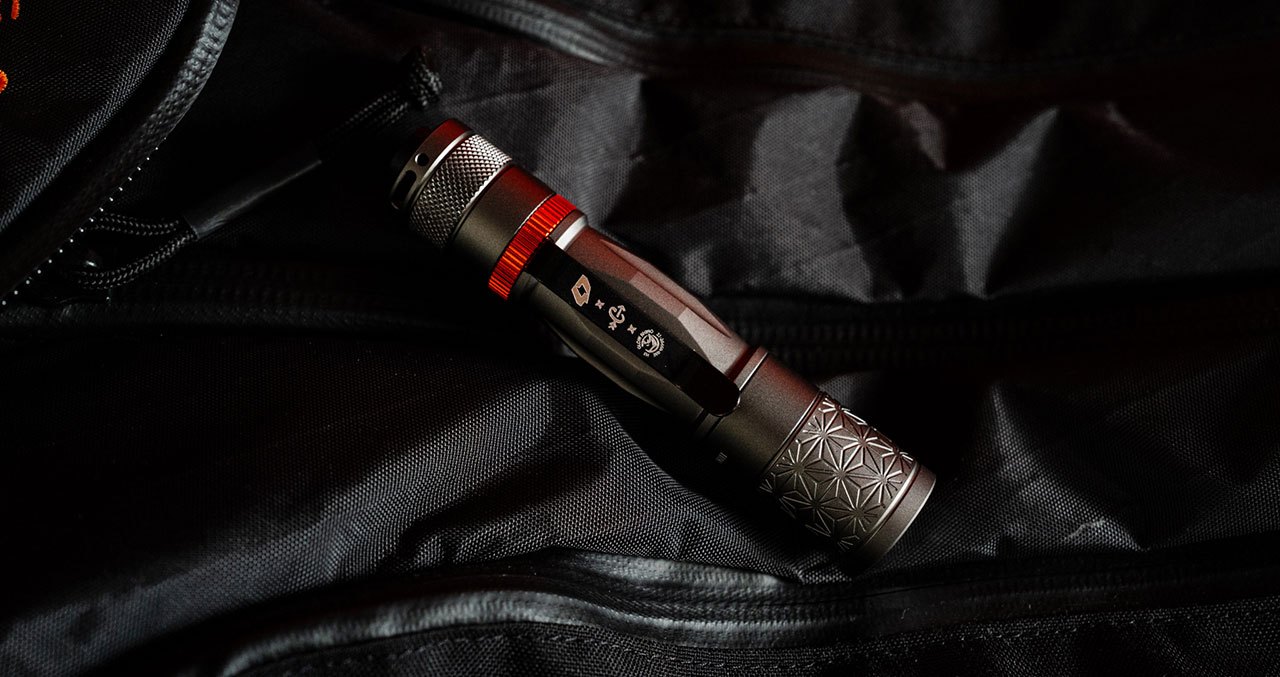
Foursevens x Carryology x Glow Rhino Quark Onibi
One of the world’s most respected EDC flashlight platforms, continually iterated and refined over the past fifteen years, is now upgraded with a sophisticated new driver, a custom Japanese aesthetic, and a feature no other manufacturer can legally offer pre-installed: Tritium illumination.
Introducing the Foursevens x Carryology x Glow Rhino Quark Onibi
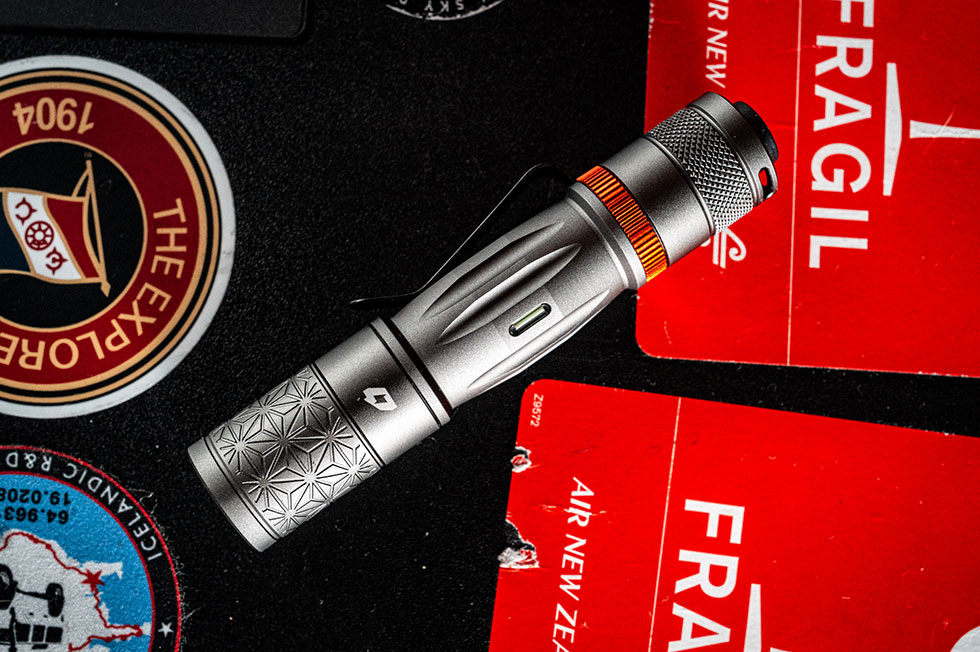
Slice, Write, Light
The Trinity of EDC—Slice, Write, Light—is a cornerstone of preparedness. While our recent ACE Grand Auxikko and Slim Bolt Action Auxikko projects (among others) handle the first two, the illumination piece of the puzzle requires diverse tools. Our titanium Onibi (Preon P1) collaboration nailed the compact EDC and travel-friendly high-CRI light source. But sometimes you need more reach, more sustained power, and a tool that can be located instantly—even when the power is completely out.
This is where the legendary Quark platform comes in.
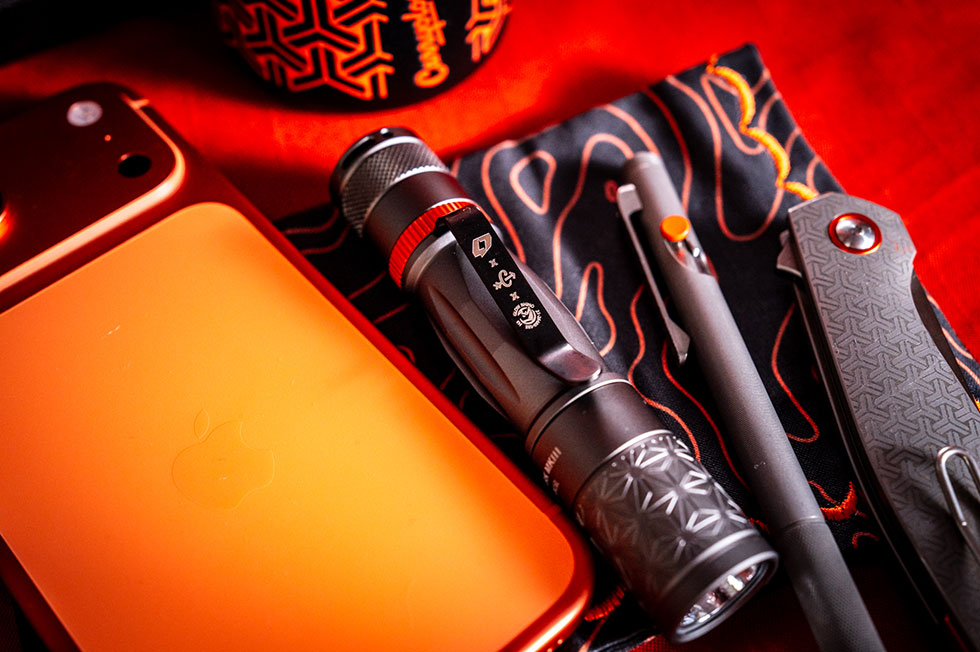
We’ve worked with Jason Hui and the Foursevens team since the beginning because they embody the ethos of quality, commitment, and relentless refinement. For this project, we needed a light that could maintain the legendary Foursevens pedigree while offering a significant power upgrade over the AAA format. And for the final, critical element of instant location and self-sufficiency, we partnered with Glow Rhino (the leading U.S.-licensed tritium installer) to achieve something truly unique.
The Foundation: The Quark 16650
The Quark series is a powerhouse built on a legacy stretching back to 2009. While many manufacturers cycle through trendy designs, Foursevens has stuck to the principle of continuous improvement on an iconic form.
This light is built around the 16650 cell format, which Jason rightly calls the “best compromise between small size and high capacity.” It maintains the classic Quark form factor, ensuring compatibility with every single Quark accessory and holster ever made, while offering a single-cell replacement for the bulky and expensive 2xCR123 setup. This platform gives us the thermal mass and battery capacity needed to run the kind of high-performance electronics this collaboration demanded.
But our job isn’t to simply paint a Quark gray. It’s to take that foundation and make it an indispensable carry piece.
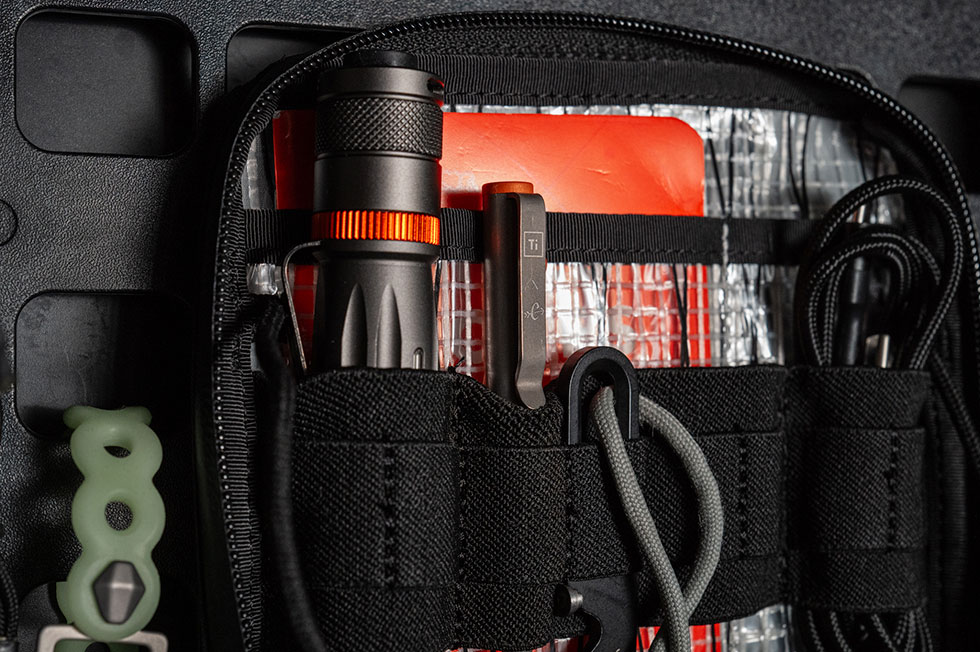
Usable Lumens
The beauty of the Onibi flashlight is that it was incredibly small and had plenty of output for day-to-day and travel tasks. The Quark is obviously larger and made for more discerning and performance-driven users. But the philosophy doesn’t change. Usable lumens = reliability and long-lasting battery life. 0.8 lumens (or “moonlight”) allows you to find stuff inside your pack or around a dark campsite and has a runtime of one hundred and sixty hours. That’s nearly a full week.
And then, on the top end of the lumens… Quark offers 650 piercing lumens. This is plenty to see far out into the distance in the outdoors. But it’s also not a gimmick like some of those 100,000-lumen lights that have 10-second battery life and get hot enough to cause third-degree burns.
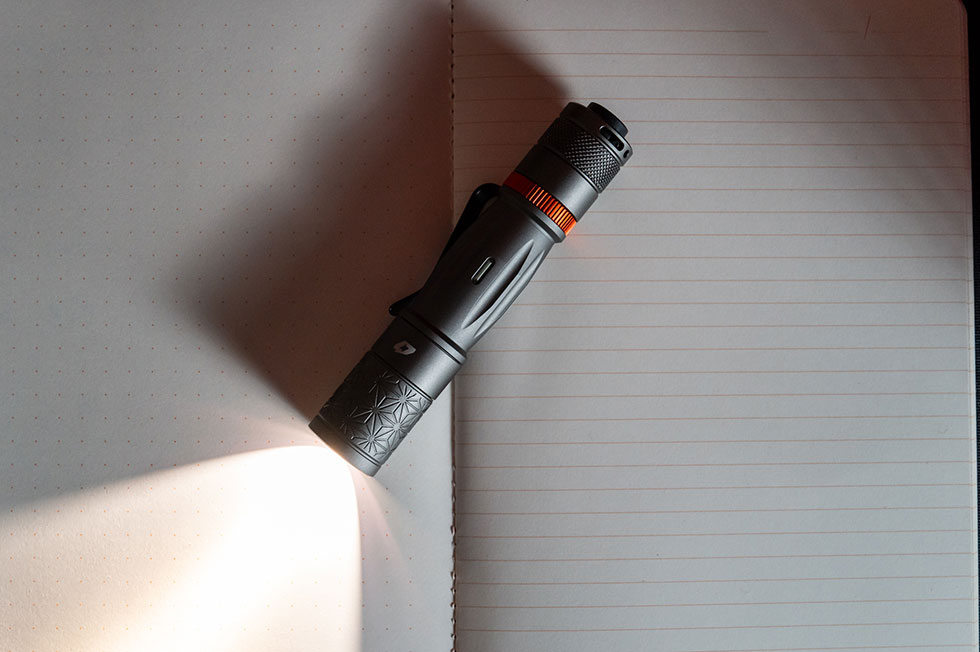
Upgrades
Jason and his team pushed themselves to integrate the most performance-focused, premium features possible, resulting in a flashlight built for the discerning user.
Tritium Illumination from Glow Rhino
Two tritium vials are meticulously installed into the light’s body for non-stop illumination. This is the headline feature and the most complex part of the production. Due to strict U.S. legal requirements, very few entities are licensed to handle and install tritium vials. This collaboration is the only way you can legally purchase a Foursevens light with tritium pre-installed.
Both vials are oriented to face directly up when the light is set on its side. This means that if the power is out, inside your bag is dark, or you’ve dropped your light on the ground out in the wilderness, the soft, self-powered glow allows for instant location without you ever needing to turn it on. Essentially, it’s an “active” form of our high-vis bag liner concept.
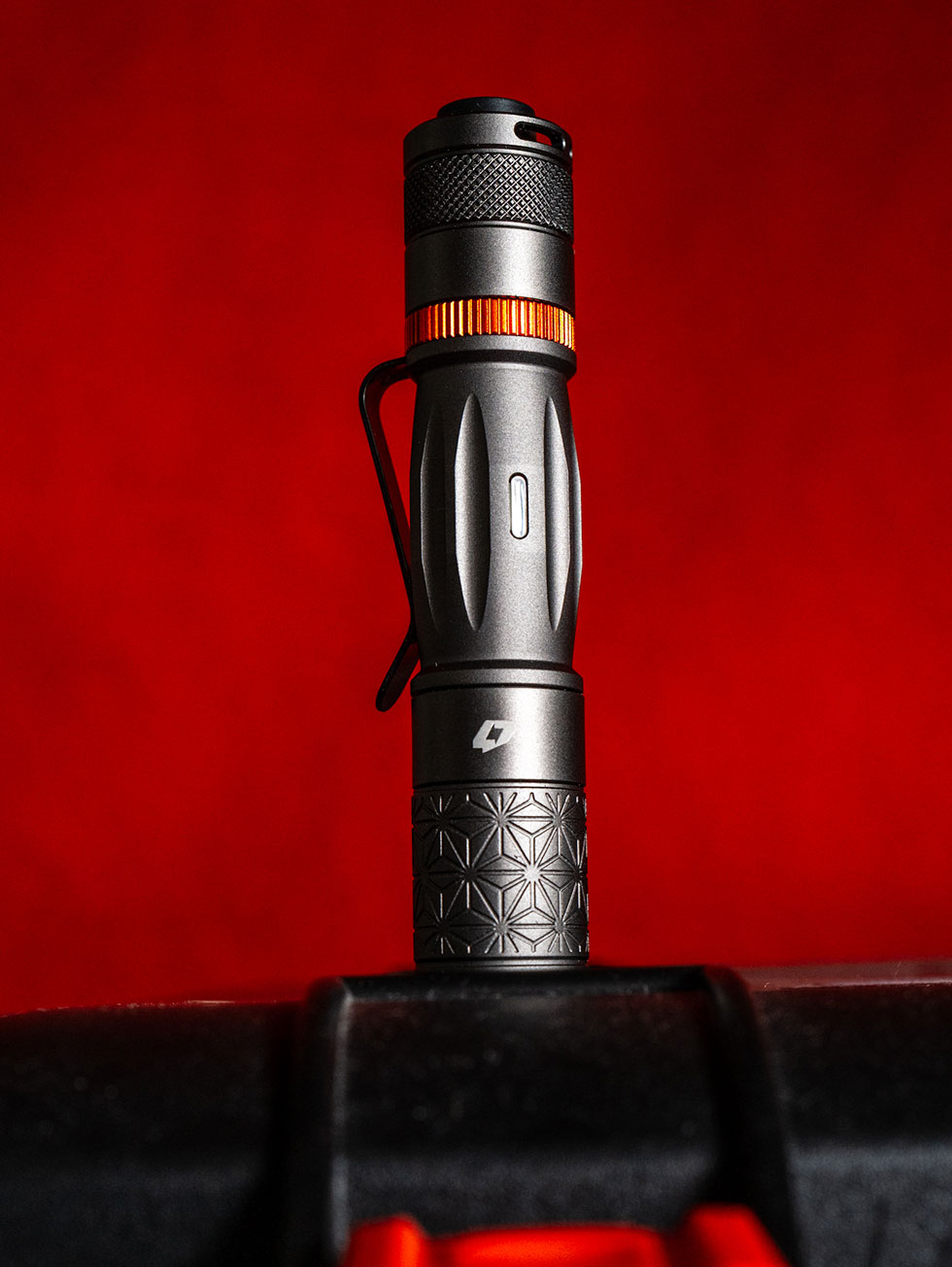
What is tritium, exactly?
First detected in 1934 by Ernest Rutherford (“the father of nuclear physics”), tritium is a rare and radioactive isotope of hydrogen, and it can exist in a gaseous state or in water. In its gaseous and rarest form, tritium is created by cosmic rays interacting with gases in the upper atmosphere. Most commonly, it’s a by-product of nuclear fission.
In layman’s terms? Tritium is magic glowy science stuff. It’s radioactive but is 100% safe to humans externally (don’t eat it). And because it’s radioactive—it glows. It doesn’t need charging via a light source. It doesn’t need batteries. It doesn’t need to be plugged in. It requires nothing. It glows on its own. And it will continue glowing for more than a decade.
Advanced U.S.-Made High CRI Driver
Nichia 319A. The powerhouse. This is one of the most expensive and powerful drivers in the Foursevens ecosystem. It offers a clean current flow, great efficiency, and incredible brightness. Coming in at 90+ CRI (Color Rendering Index), this is one of the ultimate emitters for EDC. The 4000K 90+ CRI means that you’ll avoid the cheap gas station flashlight blue artificial light we all know and despise. Quality of light is the key here, with the Nichia creating a warm natural light (similar to natural sunlight) that is easy on the eyes and pierces through the darkness. Then, it’s all capped off with high-strength optical-grade glass with a dual AR coating in front of the emitter for ultimate clarity.
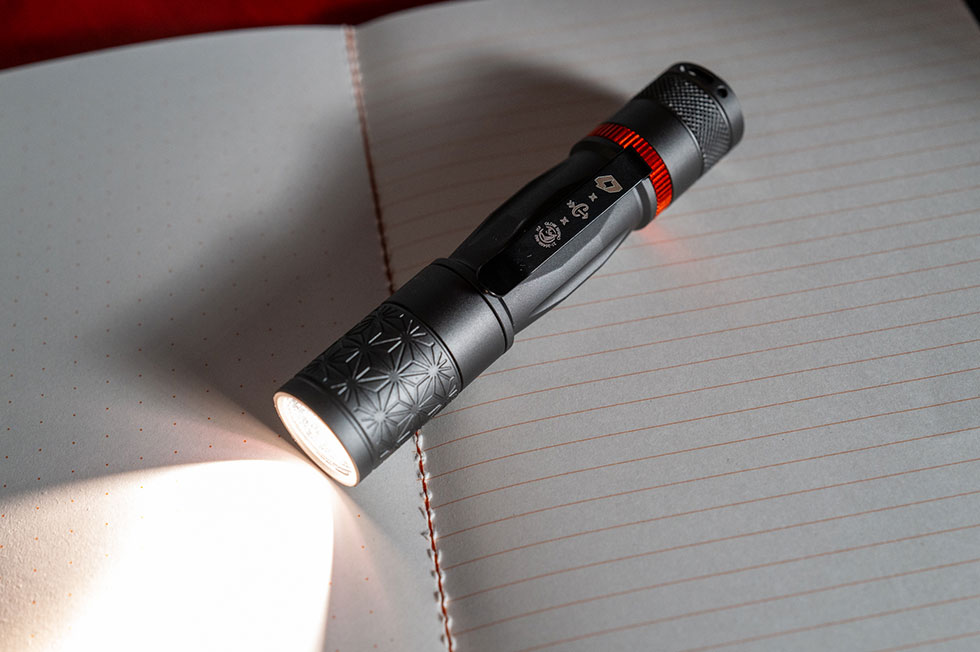
Custom Programming
Utilizing a fully programmable driver found in some of Jason’s custom Prometheus Alpha and Delta lights, the user has the ability to customize six different mode sequences (Low-Medium-High, or High-Medium-Low, etc.), giving you complete control over your light’s operation, without the complex, multi-click, extremely frustrating programming of other brands. And of course, there are also Strobe and SOS options within the program modes, just in case you need those in a survival-type pinch.
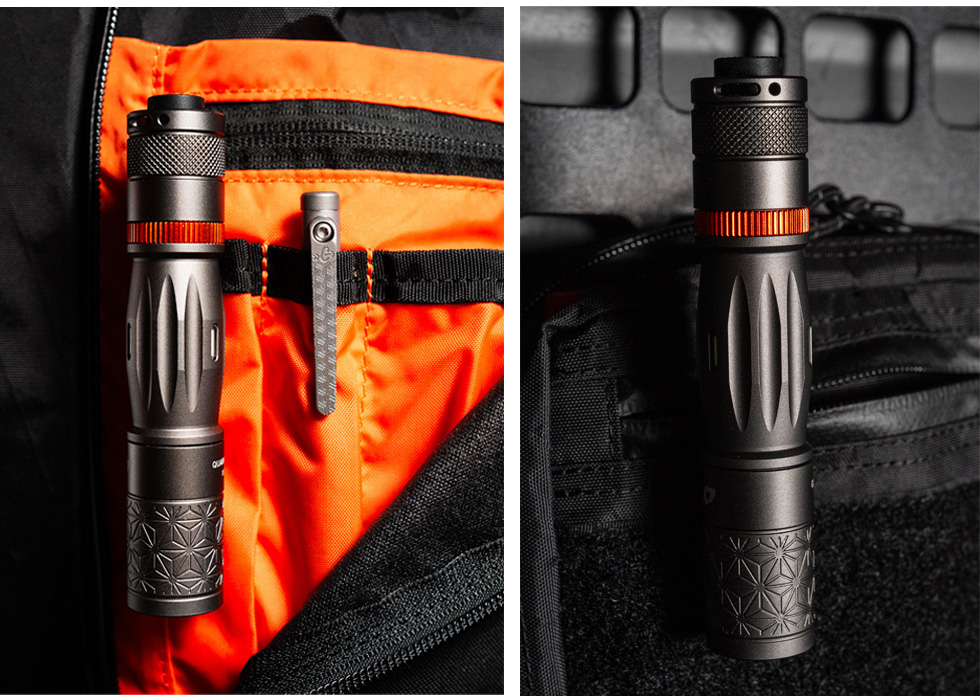
Asanoha
The asanoha pattern, named after the hemp leaf it resembles, is one of Japan’s most enduring geometric designs, consisting of six-pointed stars formed by overlapping triangles that radiate outward in an infinite, interlocking grid. Traditionally appearing on textiles, ceramics, and architectural elements, this elegant motif carries deep symbolic meaning—hemp grows rapidly and with remarkable resilience, making the asanoha a powerful emblem of strength, growth, and vitality.
This custom Japanese geometric engraving is CNC-machined onto the light’s head. This deeply cut pattern provides not only an elevated visual aesthetic but also adds crucial positive traction at your fingertips and potentially even offers a touch of additional thermal dissipation when running the light on its highest output settings.
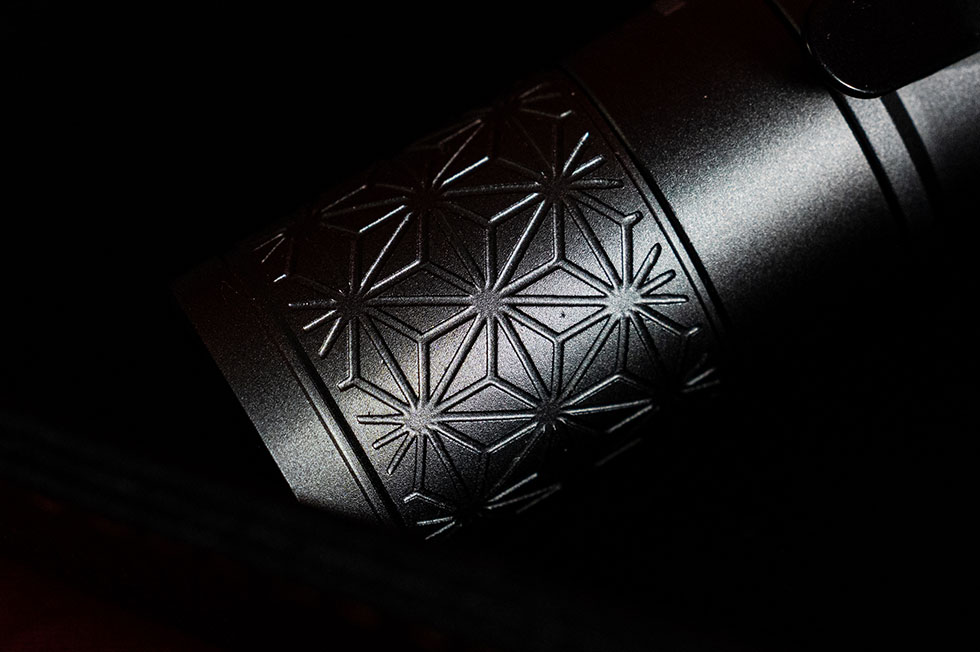
Onibi Successor
To make this a true Carryology special, we focused on high-utility colors and materials designed for everyday resilience. For this flashlight, we selected aircraft-grade aluminum for its weight and durability. To aesthetically match its little brother, we selected a stealth gray to anodize the aluminum body.
And just like the Onibi, an orange retaining ring with deep milled grooves for grip.
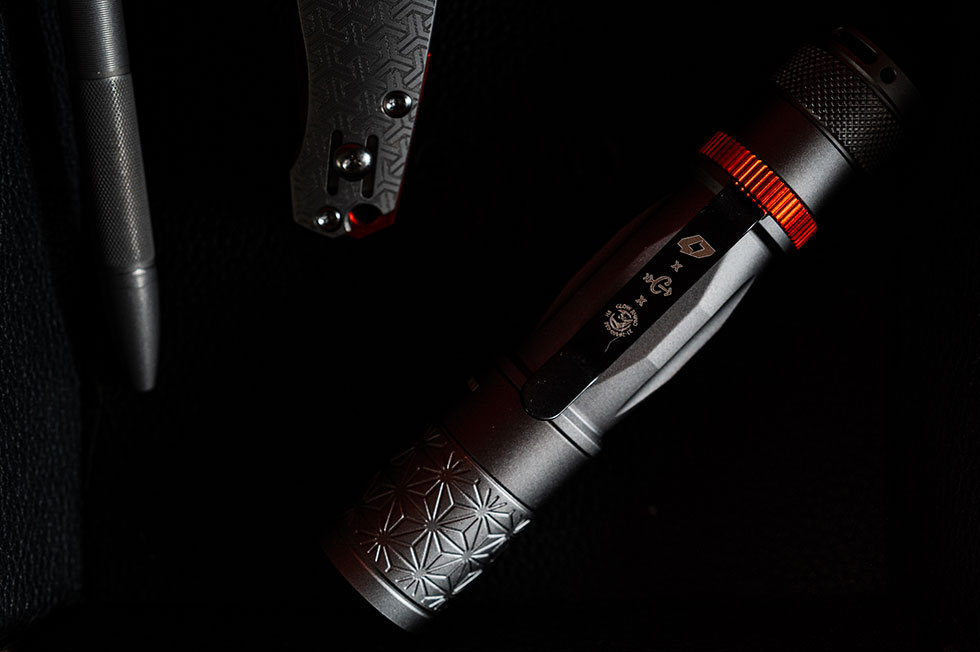
Aluminum Construction
While the 16650 cell size dictates we stick to aluminum (titanium would make this light prohibitively expensive and thermally inefficient), the Type-III anodizing on the aluminum is supremely durable and rich in color/tone. The custom gray anodizing we selected offers a tactical look that resists visible wear better than black, while the orange retaining ring provides the necessary visual color pop and instant reference point for activation.
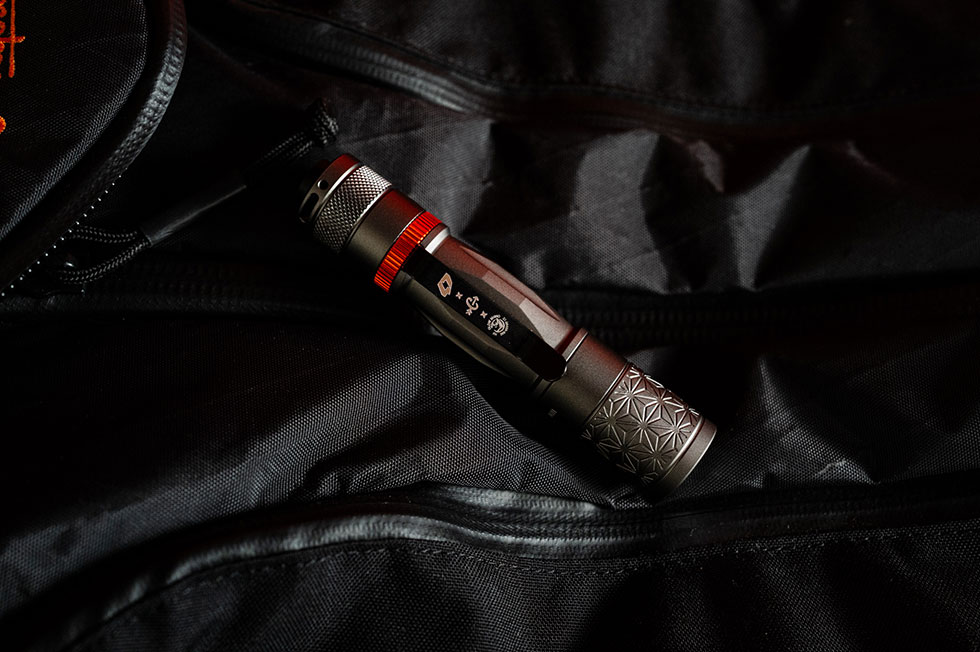
Clip
Attach it to your pack’s webbing, hang it from your pocket, or attach it anywhere else you prefer. The heavy-duty heat-treated spring steel clip is coated in deep black with all three brand logos laser-engraved. Functional and a nice aesthetic contrast against the gray aluminum body.
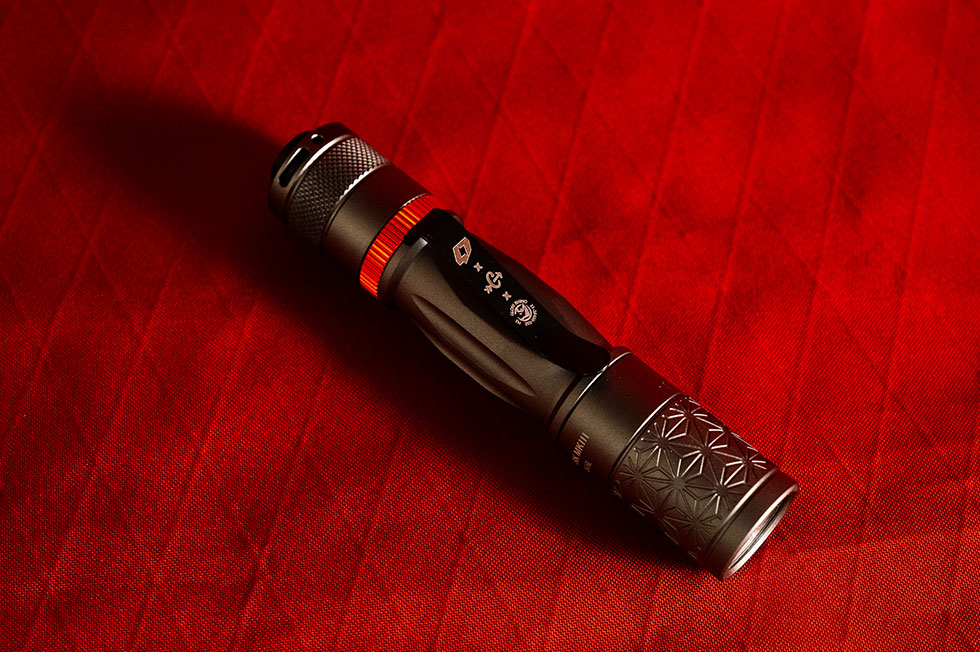
Clicky
Via the Quark’s forward waterproof button, it allows for quick and easy activation at a moment’s notice. Lightly push for instant activation. Hard click down to maintain on. Lightly tap again to cycle through the modes. And then another hard click to turn off. While it might be confusing when reading text here, you’ll instantly become an expert within the first 30 seconds of tapping and clicking. It’s intuitive and doesn’t take a degree in electrical engineering and programming to understand, unlike some other competitors.
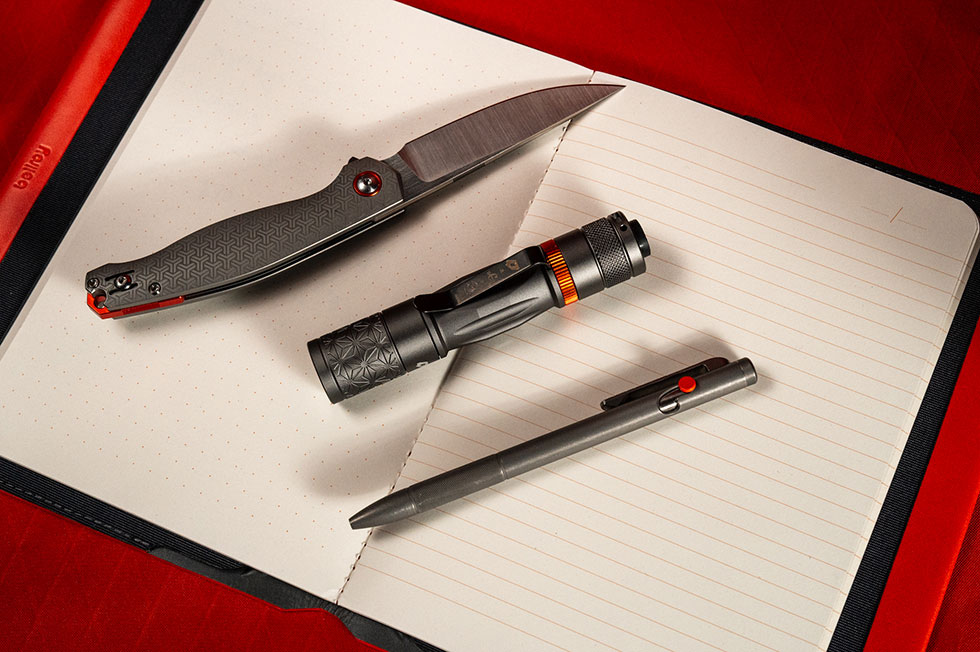
Rechargeable 16650 Power
Rather than burning through pairs and pairs of expensive CR123 battery cells, the Quark uses a powerful 16650 cell made specifically to Foursevens specs. The 3.7V means high output, and 2200 mAh means long-lasting life.
Plus, every Quark comes with its own minimalist and lightweight Foursevens USB battery charger. The beauty of rechargeable batteries is that you can pop in a fresh cell at any time and charge a backup on the Foursevens charger while you’re using the other cell.
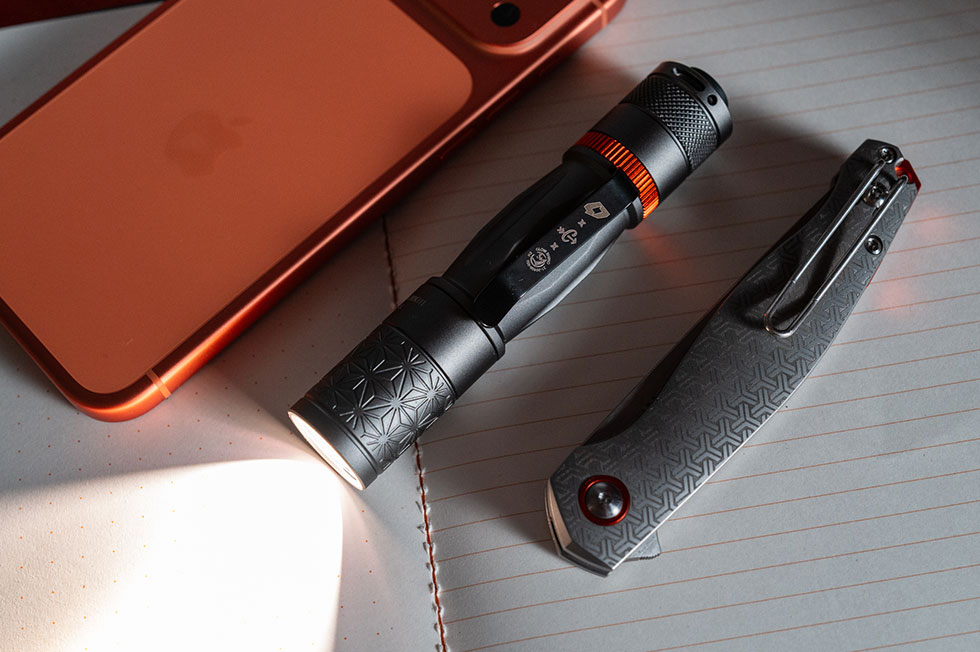
Codename: Onibi
To complement the asanoha CNC-engraved pattern and the purpose of the tool itself (creating light), we’ve carried forward our Onibi codename tradition. Onibi are a type of atmospheric ghost light from Japanese folklore, translating to “Demon Fire.”
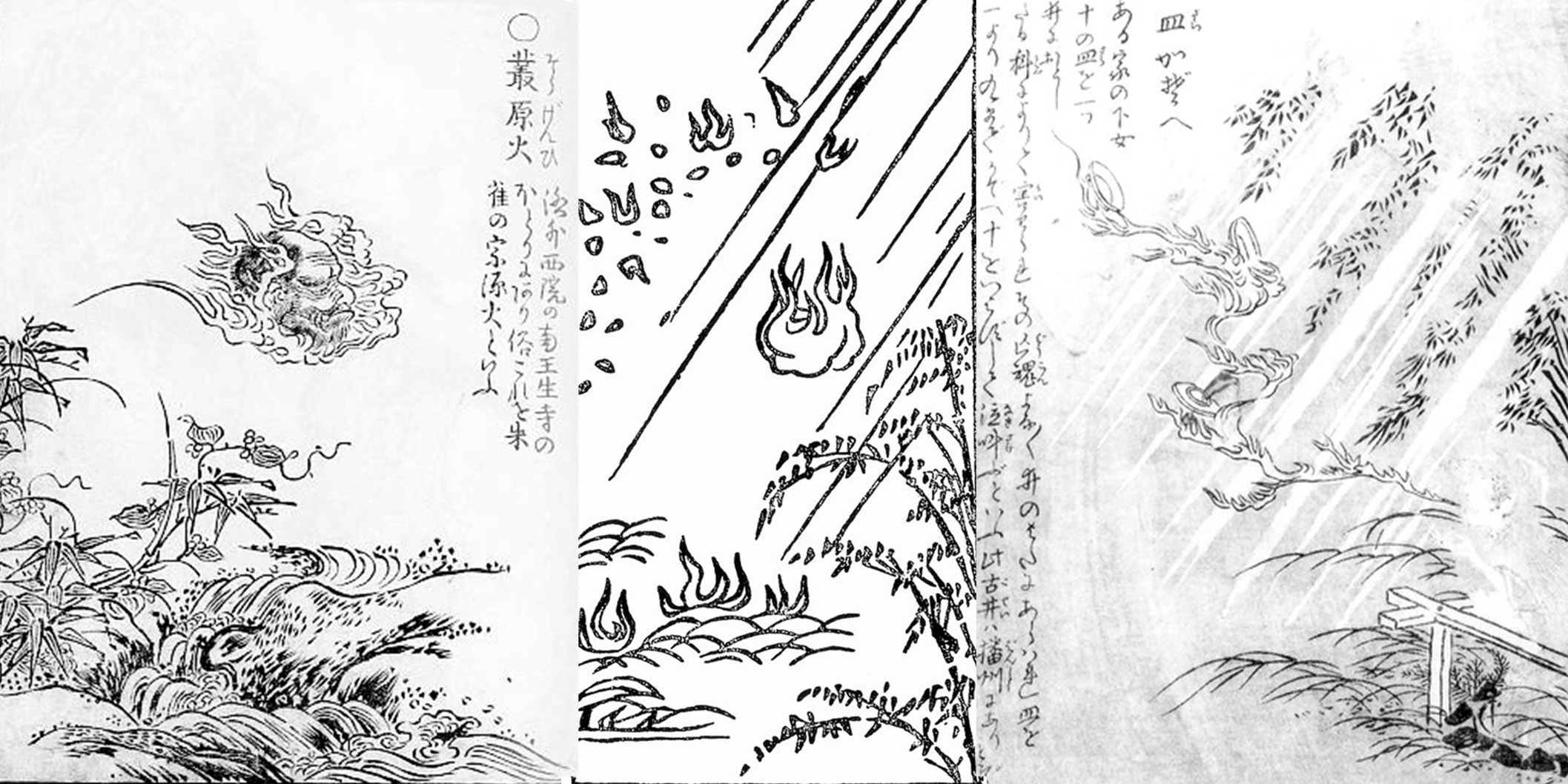
Drop Time
We are proud to introduce…
Foursevens x Carryology Quark Onibi
Release Article with shop links will go live on Carryology.com on:
Tuesday 14th October, 12PM EST





 Carry Awards
Carry Awards Insights
Insights Liking
Liking Projects
Projects Interviews
Interviews